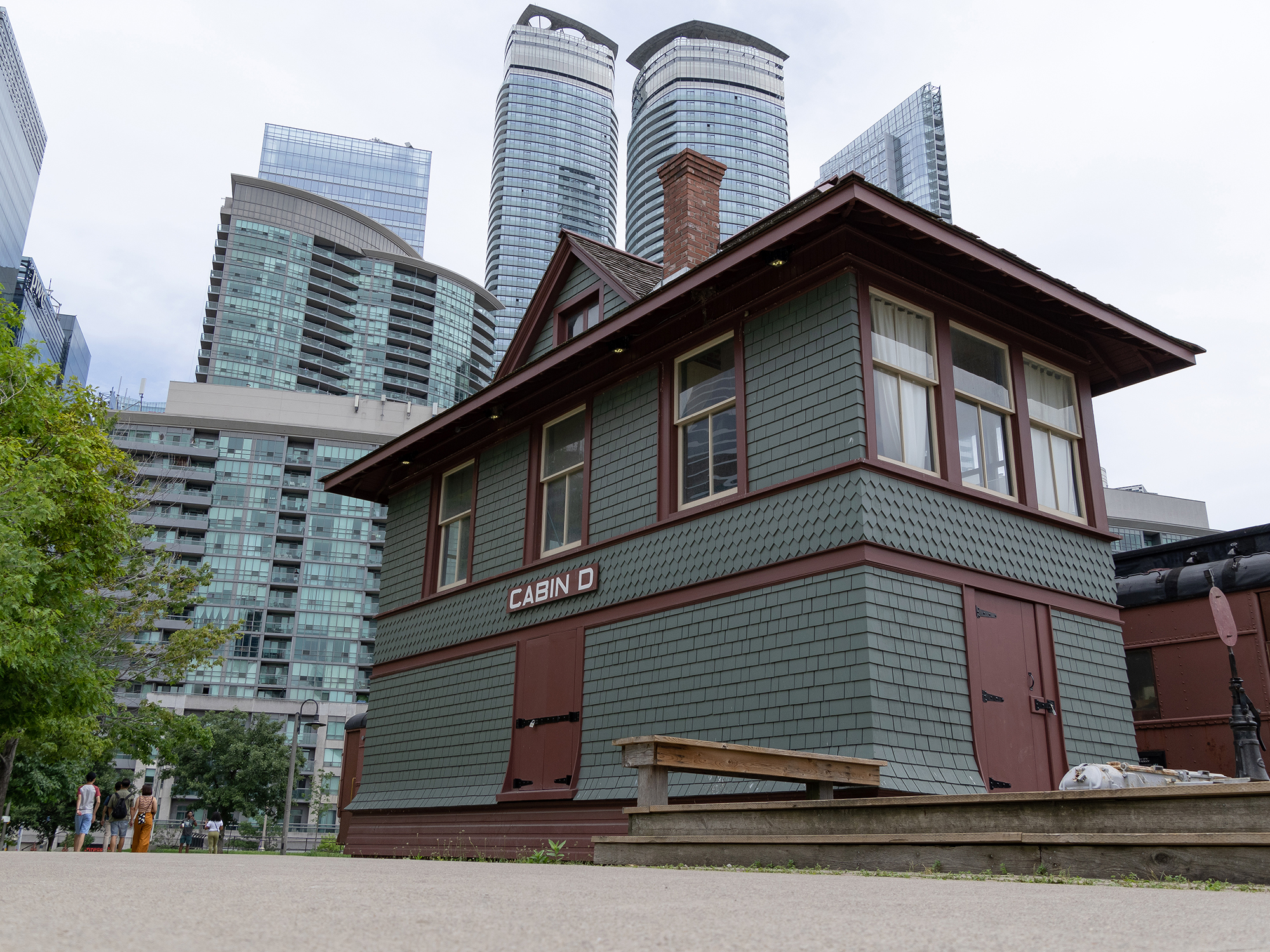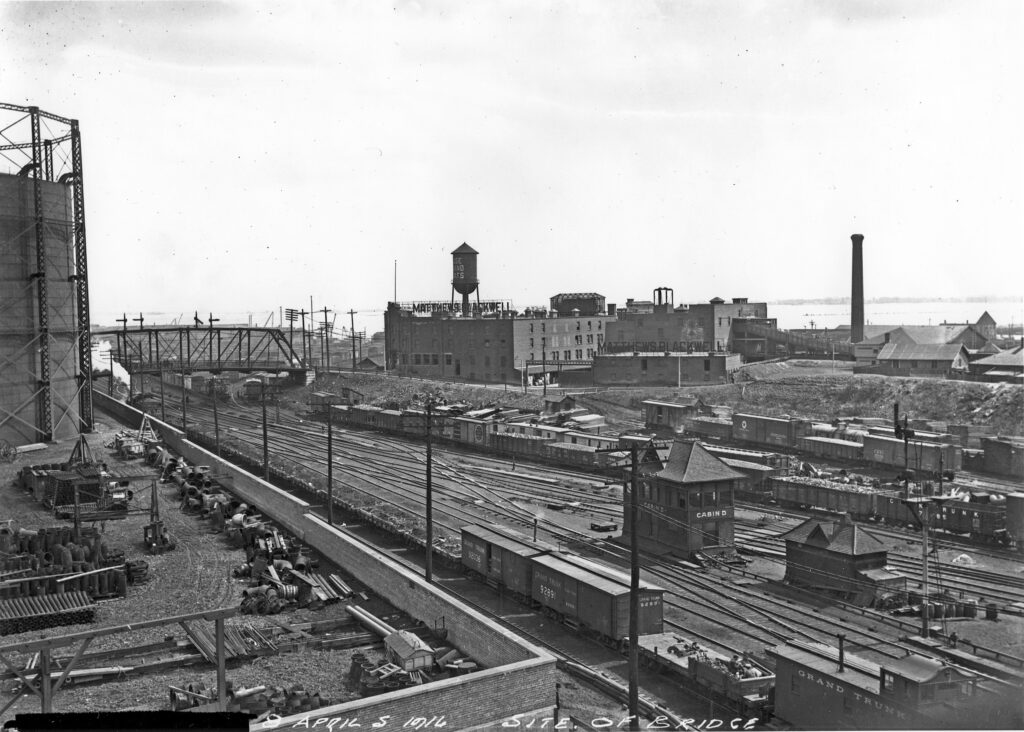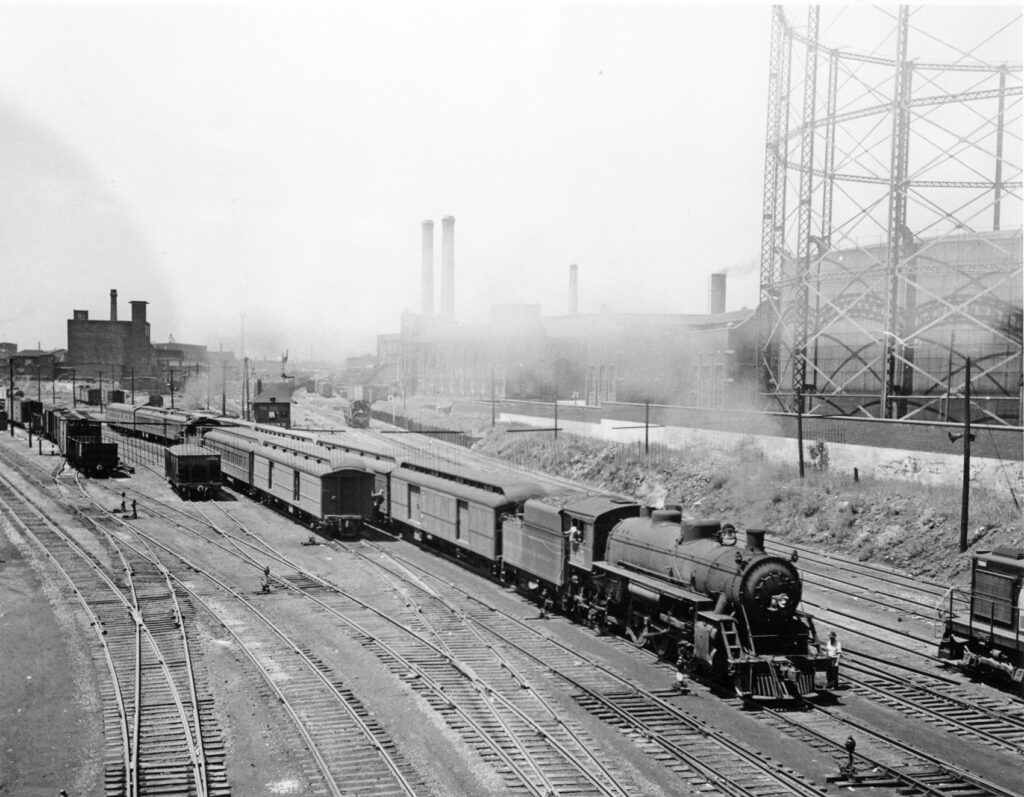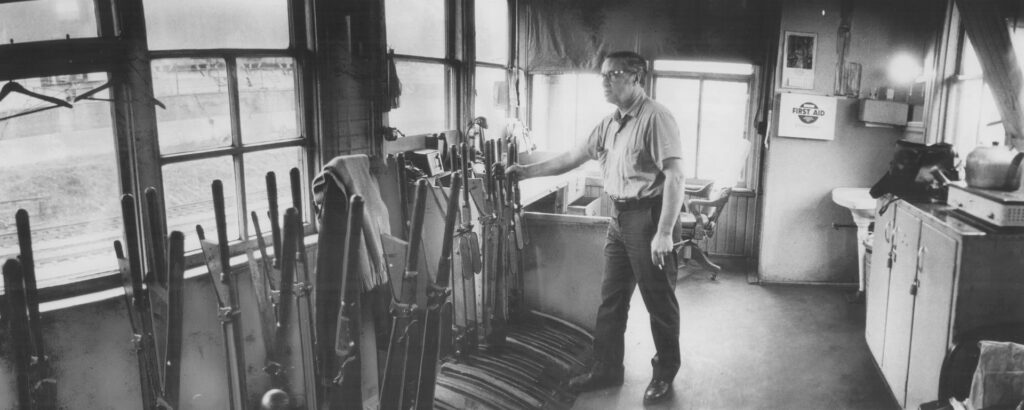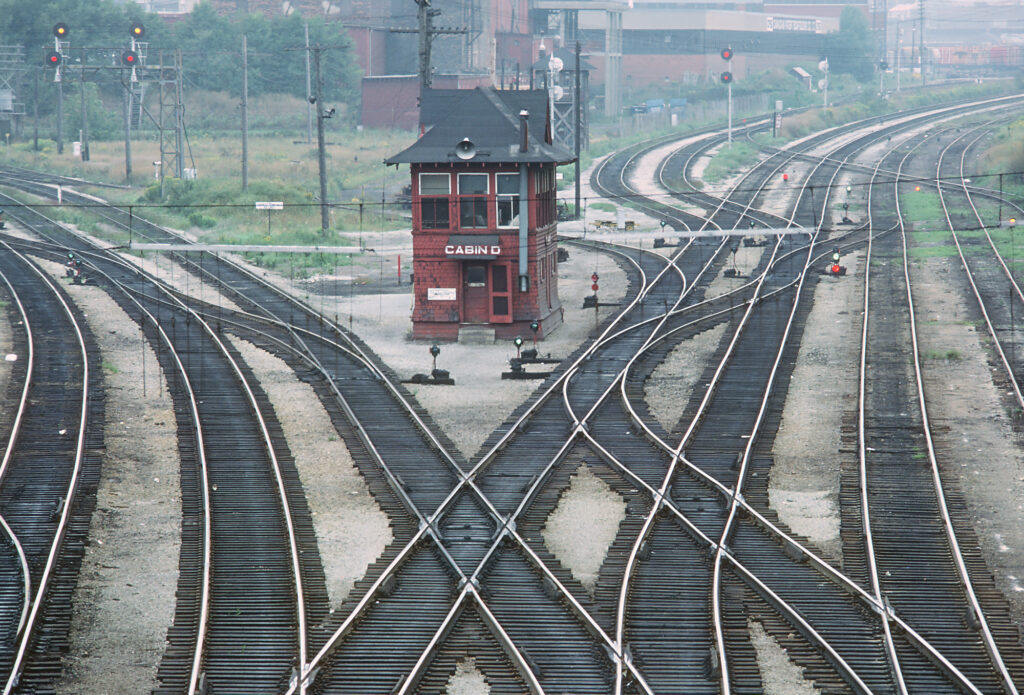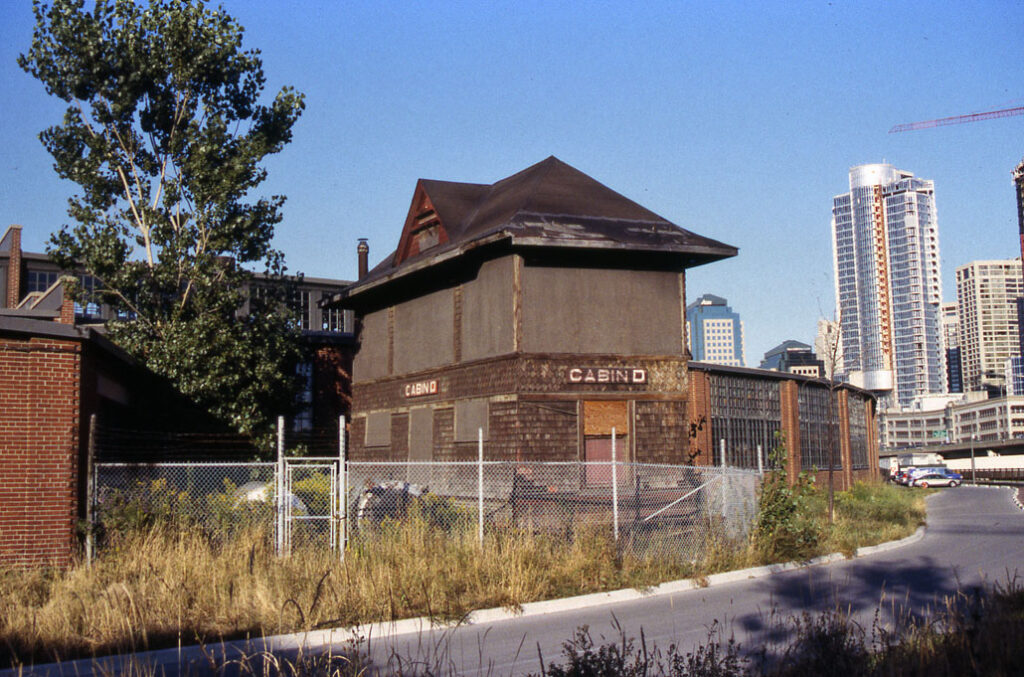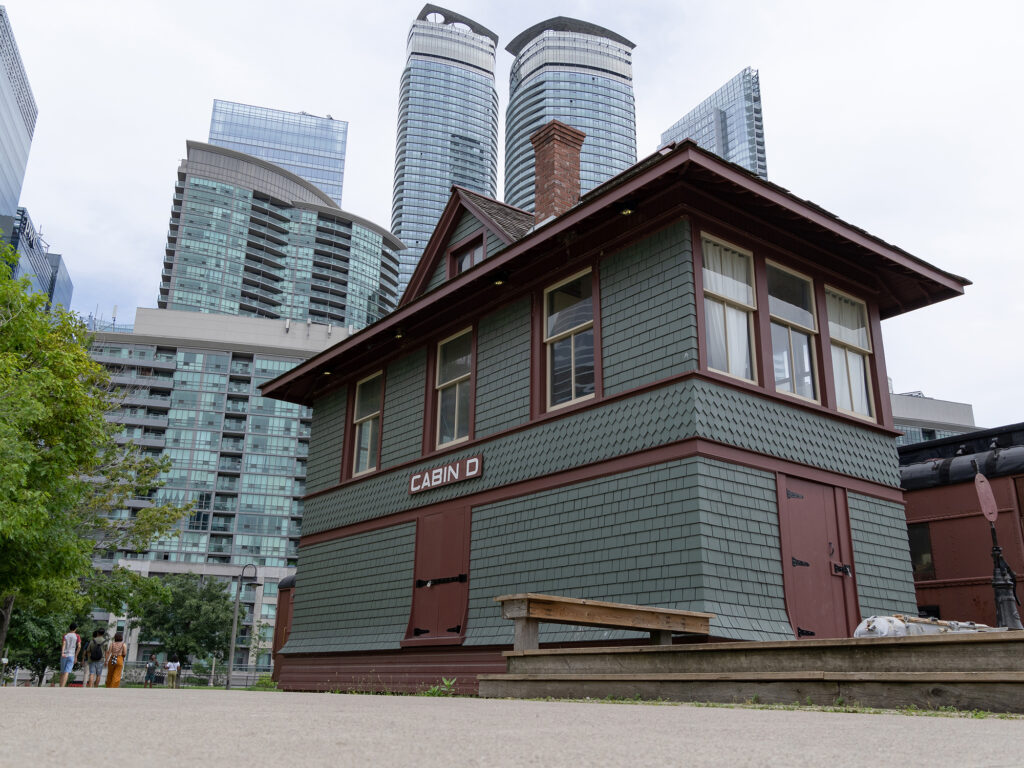What is an interlocking tower?
Interlocking towers and signal towers (or signal boxes if you’re from the UK) had an important role in railway operations in Canada and North America broadly. They have largely disappeared from this continent as more automation and newer safety systems have been introduced, but some can still be found. Their purpose was to centralize the control of switches and signals in a given area to a specific building – the signal tower – where a signalman could control them remotely using an array of levers. With some exceptions, the tower was usually positioned within view of the signals and switches under its control. These towers were most commonly built at diamond crossings where two or more railway lines crossed one another at grade, or to control train movements in major terminals with many tracks connecting with one another. The first known signal tower in Toronto was built in 1855 at the diamond crossing of the Great Western Railway (now GO Transit’s Lakeshore East Line) and the Grand Trunk Railway (abandoned), just west of Strachan Avenue. The following year, the first interlocking system was patented by John Saxby of England. This system ensured that signals and switches could not be aligned in a conflicting manner through human error, thereby increasing overall safety. It’s unknown exactly when interlocking systems started to appear in Canada, though some non-interlocked junctions persisted in the Toronto area into the early 20th century.
History of Cabin D
Toronto’s second Union Station (a predecessor of the current Union Station) became increasingly inadequate to handle the vast number of passengers and trains using it in the late 19th century. On July 26th, 1892, the Canadian Pacific Railway and the Grand Trunk Railway entered an agreement to significantly renovate it. This would involve considerably rearranging the tracks leading into the station from the east and west. The Grand Trunk had spent the previous decade amalgamating with multiple railway companies that historically served Toronto, and while the arrangement of the tracks might have made sense originally they were now redundant and unoptimized for high traffic volumes. To ensure trains could move in and out of Union Station quickly and safely, an interlocking system was to be built in tandem with these improvements to govern train movements in the rail corridor.
Four wooden interlocking towers, along with the system itself and all the associated signal appliances, were designed and supplied by Saxby & Farmer Limited. This was the UK firm started by John Saxby in partnership with Stinson Farmer; the Grand Trunk Railway of Canada was a frequent purchaser of their signal appliances during the late 19th and early 20th centuries. For the Union Station corridor, the Grand Trunk opted for an older and cheaper all-mechanical system instead of the newer electro-pneumatic or all-electric systems available at the time. The interlocking towers built by Saxby & Farmer for the Union Station corridor, referred to as “cabins”, were lettered A through D. Cabin A was located between the east end of old Union Station and York Street (about where the current Union Station platforms are now), while Cabin D was west of the Sir Isaac Brock Bridge. Between them, Cabin B was located just west of old Union Station (and just east of John Street) while Cabin C was on the east side of Spadina Avenue. Contained within all four towers were 187 levers used for controlling the signals and switches around Union Station. Cabin A – the largest of the four – had a total of 66 levers on its own. Each cabin differed in appearance slightly, partly because their size directly corresponded to the number of levers contained within. Each of the cabins were generally built between 1893 and 1895, though company records of the Grand Trunk Railway indicate that Cabin D specifically dates to 1894. The Grand Trunk staffed all four cabins until 1906 when the Toronto Terminals Railway (TTR) was incorporated and took over that responsibility. The Grand Trunk and Canadian Pacific each owned a 50% stake in the TTR.
Significant change came to the Union Station Rail Corridor and its interlocking system in the late 1920’s. The current Union Station was built over a roughly 16-year period beginning in 1914. In 1924, after much deliberation between the city and the railways, it was decided that the vast majority of the rail corridor would be raised on an elevated embankment. This involved raising it above city streets and, critically, the replacement of its nearly 30-year-old interlocking system. Cabin A, B, and C were soon replaced with new brick interlocking towers. The Cherry Street and Scott Street towers took the role of Cabin A on the east side of Union Station, while the John Street Tower took the role of Cabins B and C on the west side of Union. Only Cabin D remained, but the levers within were disused from that point on. Instead, most of the nearby switches were controlled by switch tenders on the ground receiving commands from an operator within Cabin D via a larger speaker on the roof. This remained the case until the Cabin D control point was cut over to new automatic signals and switches in 1984. The Cabin D interlocking tower was subsequently selected for preservation by the City of Toronto and moved to the John Street Roundhouse. It sat there in a forlorn state for 16 years until the Toronto Railway Museum was opened on that site in 2010. It was fully restored in time for the museum’s opening by volunteers of the TRHA. It is open to the public on most weekends in the summer with demonstrations of the interlocking system by our volunteer docents when available.


